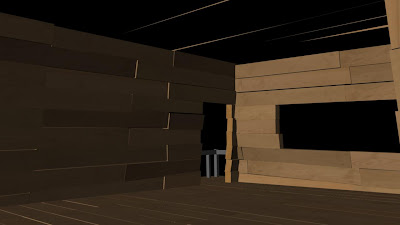For the opening shot of our film there is wind picking up and rain as the storm gets closer and closer to the treehouse, to make the opening shot look that bit more believable we will need to have movement in the tree and the leaves. Even though I'm completely overloaded with work at the moment it's been left to me to rig the tree and animate it. So not only do I have to learn how to rig in one day, I also have to apply it to the tree and then animate it all myself.....great....

In terms of rigging I had no idea where to start, I searched for the most basic tutorials I could but even they were too complex for me to fully grasp so in the end I was doing a mix match of different tutorials picking out the parts that worked for me. Unfortunately we are too late in the term to ask for someone else to this for us as everyone is too busy on their own films. I started the rig by placing joints along the branches of the tree, for the leaves I had to imagine where there would be branches on the tree spread out so I had to place the joints accordingly, I also used images of trees without leaves to plan out where to put the joints.

Once I finished placing the joints I had to make sure that the tree was prepared properly, I turned it into a 'Soft Body' so that once I attached the rig joints to it the tree would bend and move as I moved the joints. At this stage it was causing my Maya to start lagging and slowing down because of the large amount of faces for the leaves being moved at the same time, this has made working on this part of the project extremely long and frustrating as every little movement or click I do lags the software.
This is a playblast of the first animation test I done on part of the leaves, generally the movement looks pretty good and the timing is quite good as well, but I've noticed that the leaves are stretching in some areas which is going to look very wrong in a rendered shot. To be honest I'm not even sure if this is the best way to animate the tree but nobody seems to know how to do it any other way and from what I found online, a rig is the best way to do it.
This playblast shows the stretching of the leaves a lot more clearly as I exaggerated the movements in the animation to make it look like the wind is a lot more fiercer. To be honest, if I were to fix the stretching, the only way to do it would be to animate each and every individual joint of the tree rig so it flows smoothly, however given the time constraints I have and the lagging of Maya it will not be possible, as it is, I feel that the rig has failed and that another method may be needed to animate the leaves. I considered the use of dynamics and tried it out but I kept having error messages because the tree and leaves are too complex in terms of geometry for the Dynamic fields to apply to. I tried changing the tree to an 'active rigid body' so that I could apply a turbulence field to simulate the wind blowing into it but again I had similar error messages for the same problem.
I tried a ditch-last effort again with the tree rig but found it impossible to use, maybe if I was more experienced I could've made a more complient and easier to use rig set-up for the tree, but with my knowledge I did the best that I could and consequently failed due to pressing time constraints and software issues, it doesn't help that Karen hasn't been able to use her laptop for a while now either so I feel that the group has fallen behind, I wish Karl would be more willing to help out and assist with problems as well but he's only interested in doing his own tasks leaving the problems to me and Karen to sort out.

































